The ability to join High-Density Polyethylene (HDPE) pipe is essential in the construction of dependable, leak-proof pipelines. This guide is designed to equip professionals and hobbyists with the necessary skills to carry out HDPE pipe flaring or welding processes. If you are engaged in water or gas supply systems or any other such cosine projects, then you will find the knowledge of these methods and their implementation quite valuable for improving the performance of your works. In this manual, we will focus on various fusion methods and their use for construction processes, as well as documentation of graphically represented time frames and functional approaches for achieving ease of performance. By the end of this book, readers would have garnered the requisite skills that will prepare them as capable practitioners in tackling actual projects.
What is HDPE Pipe Fusion?
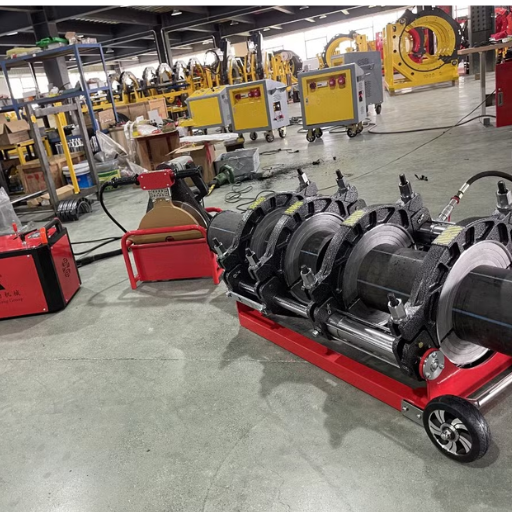
HDPE pipe fusion is a technique that joins two pieces of High-Density Polyethylene pipe with heat and pressure. In this technique, the ends of pipes are heated until rendered molten, and subsequently joined to form an extremely durable and leak-proof bond upon cooling. There are other methods of HDPE pipe fusion including water, gas, and industrial applications which require complex and really strong joints making this a dominant method of constructing pipelines when overall strength and effectiveness are necessary.
Understanding the Fusion Process
It is essential to start by appreciating the importance of both heat and pressure in the fusion of HDPE pipes. In the work I do, I have to make sure that both the temperature and the amount of time spent heating them are controlled so that the ideal plasticizing of the pipe ends does not overheat and damage them. After plasticizing, controlled pressure is conceptually used to fuse the ends to construct a joint. Understanding the workings of the fusion process reduces the chances of poorly made joints and improves the efficiency and service life of any given pipeline system. The fusion process may be a very challenging one due to the strict procedures that must be followed, but when properly done, you end up with very good installations that will last for a very long time.
Types of Fusion Techniques
I come across two types that I often use in practice: butt fusion and electrofusion. Let’s start with butt fusion. This method is sometimes regarded as the old way of connecting HDPE pipes. As for the main factors that enable the effectiveness of this method, I take into account these four procedures as being the most important ones:
- Pipe Alignment:In a butt fusion machine, proper alignment of the pipes is critical. A lack of alignment will affect the strength of the joint.
- Cleaning:All the pipe ends should be clean of any contaminants. To assist with this, I utilize a facing tool to ensure that both ends are clean and smooth, which is very important for obtaining a nice welding bead.
- Heating:We apply heat evenly with the help of a heating plate until the ends of the pipe are optimally molten. It is very important to pay attention to heating time and temperature since these parameters change depending on the pipe diameter and wall thickness.
- Fusing:During the welding process, the ends of the pipes are joined under controlled pressure. I always make sure that the bonding pressure is sustained until the joint is cooled, and as a result, a perfect joint is formed.
On that note, let’s examine electrofusion. This method involves the use of particular electrofusion fittings with embedded heating elements to unite the pipes. The parameters that are key for electrofusion include:
- Fitting Preparation:For cross contamination prevention, we make sure that the pipes and fittings are clean. I apply scraping tools for the pipe surface preparation prior to bonding.
- Connection:In the case of eglectrofusion, it is necessary to connect the fitting to the power source which heats the element and makes the fitting a permanent part of the pipe . Achieving the appropriate current and voltage settings is essential.
- Cooling:You can be sure of a permanent bonding of the joint by letting it cool off under controlled conditions. This underscores the importance of this step which is always missed as movement initiates before the joint reaches full strength.
To guarantee a strong and dependable pipeline system, both approaches call for being thorough and observing safety measures.
Advantages of Using HDPE for Pipe Fusion
I can point out several advantages of High-Density Polyethylene (HDPE) that promote pipe fusions, making it one of the preferred materials in pipeline systems, given that I am an industry expert:
- Durability:HDPE pipes are well known for their remarkable strength and durability. It has a tough and flexible structure which makes them unbreakable and not able to get physically harmed.
- Corrosion Resistance:Contrary to metal tubes, HDPE does not rust or corrode. This resistance makes it perfect for conveying water, chemicals, and gases.
- Leak-Free Joints:The unique characteristic of HDPE pipes is that they undergo a fusion welding process, finally forming unbroken joints and greatly improving the joint’s performance by minimizing the risk of leaks entirely. This characteristic allows to guarantee the structure intactness and an efficient service life.
- Flexibility:HDPE pipes have the capacity to bend and move slightly to accommodate any vibrational ground changes which make them indeed very flexible. This flexibility also aids in the relatively easier installation process and its adaptability to the terrain.
- Chemical Compatibility:LHDPE can be used in uncountable applications in agriculture, industry or wastewater treatment, since it has good corrosive properties and is resistant to many chemicals.
- Lightweight:In comparison with other hard-core materials like steel or concrete, HDPE is much easier during transportation and even while handling in the course of installation due to their light weight nature.
All these features assist in universalizing and optimizing the process of HDPE pipe melting and therefore they are economic and dependable alternative consider even in the case to address the weathered issues both in the town and in the country.
How Does Butt Fusion Work for HDPE Pipes?
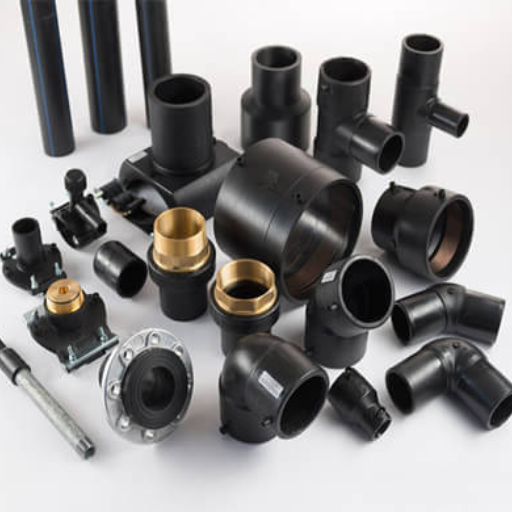
Butt fusion is mostly done in HDPE pipes by joining them end to end without the use of an external connector. The technique entails heating the end of two pipes thanks to the heating plate until both ends melt. After the ends have been sufficiently softened, the two parts are pressed together to assist the molten material join, and the two ends form a single piece that cannot leak until the material solidifies. This method guarantees the joint is as strong as any other section of the pipe, which is appropriate for pipelines that require a high level of integrity and durability.
Step-by-Step Butt Fusion Process
The butt fusion process is one that isn’t difficult to understand, given my vast knowledge of the industry. A straightforward explanation is as follows:
- Preparation:To begin with, it is important to prepare the pipes and cut out the ends in order to make them square and clean. This will allow the pipes to fit together perfectly when they are fused without any gaps or misalignments. Particles or impurities must be removed from the ends so that a clean fusion can be achieved.
- Alignment:The pipes are then butt-fusion welded. Positioning of pipe ends is crucial for a successful fusion joint since accurate jocundity of both ends is a prerequisite. Proper alignment is an essential factor to achieve a good fusion bond for the joint.
- Heating:Next, we place the joint of the pipe on a automated heating plate. We heat the ends until they get to the required melting temperature. The temperature is critical to control, it is generally around 450° F (232° C) to enable melting of the pipe surface uniformly.
- Joining:After heating, we carefully dismount the heating plate. Next, we place the two ends of the pipe together and apply force. This force must also be constant so that we have a consistent and strong bonding.”
- Cooling: After the pipes are pressed together, we allow them to cool while maintaining pressure. Cooling without disturbance is vital for achieving a solid joint.
- Inspection:Lastly, an examination of the joint visually or using some non-destructive techniques is conducted after the final cooling of the joint. Indeed, a good butt fusion joint must be symmetrical and well-balanced in every direction.
Taking these actions, we guarantee that the butt plate fusion process forms a strong and uniform joint necessary from a long-term piping system integrity perspective.
Key Equipment for Butt Fusion
- Butt Fusion Machine
- Purpose:During the joining process, this aligns and secures the ends of the pipes and even applies pressure on them.
- Specifications:The machines operate on pipes ranging from a few inches in width to small diameters, and their capacities also vary in size.
- Features:May add in the modules for the control of the preciseness, the pressure monitoring and the quality data measurement.
- Heating Plate
- Purpose:May add in the modules for the control of the preciseness, the pressure monitoring and the quality data measurement.
- Specifications:A temperature of approximately 450 degrees Fahrenheit (232 degrees Celsius) is more or less where it operates.
- Features:It is common to cover with a non stick coating for the pipes not to bond with the pipeline material.
- Trimmer or Facing Tool
- Purpose:Guarantees that the edges of the pipes are neatly cut and that there are no flaws.
- Specifications: Designed for specific pipe sizes and materials.
- Features: This may feature automatic or manual operation, with adjustable blades for various pipe thicknesses.
- Alignment Clamps
- Purpose:It might have self-propelled or freely movable control, and the blades can be set to accommodate different levels of pipe thickness.
- Specifications:Disponibile in vari design per adattarsi a diverse dimensioni di tubi.
- Features:Make sure there will be no unnecessary movements during the process of fusion.
- Control Unit
- Purpose:Oversees the heating, pressure, and timing parameters within the course of fusion.
- Specifications: Can be manually operated or fully automated.
- Features:It often includes functions such as filing the solutions for further documentation of process and quality care.
It ensures a successful butt fusion process and ultimately leads to strong joints, which are important for the performance and life of the pipeline.
Butt Fusion Jointing and Quality Assurance
Expert Perspective on Butt Fusion Jointing and Quality Assurance
Even so, I think butt fusion jointing is one of the most sensitive operations in pipeline construction. One excellent technique is the use of electronic controls, as there is no way human error can result in heating and pressure variations during fusion. I believe the heating plate gets to its target of 450°F (232°C), and the merging of the pipes takes place without any issues. The use of a trimmer or facing tool is essential in that all pipe ends must be designed perfectly; otherwise, the joint will not be secure. I’ve never seen a situation where both the fusible ends do not have to be perfectly aligned, and only clamps can deal with that one. Even a tiny angle is enough to affect functionality. The meaning of a control unit is not just aiding in carrying out the steps but providing records necessary for quality assurance as well. In my experience, much effort in the form of funds and time is saved when high-quality equipment is used, and strict procedures are adopted to ensure that the formed joints are strong enough and maintain the operational requirements over the years.
How to Use Fusion Time Charts Effectively?

While using fusion time charts, the first step would be to select the appropriate chart designed for the relevant material and dimensions of the pipes. Recognize the surrounding temperature in terms of heat soak and fusion pressure, for these parameters sometimes have a direct effect on the joint after it has been made. It is essential to follow such directions from the manufacturer verbatim, as noncompliance may produce poor-quality bonds. As stated by the manufacturer, do not forget to regularly calibrate your equipment. Last but not least, record on a chart each step performed for the sake of quality assurance and a better understanding of how all parameters could affect the yield strength of the joint while meeting set conditions.
Reading and Interpreting a Time Chart
Many people in our industry will agree with me that understanding and interpreting time charts of any fusion process correctly is of utmost importance. To be able to read a time chart, one must first fully understand what the symbols and figures on an image are representing. One must relate these data to the specific stages of pipe fusion, such as heat soak and fusion pressure. Every time I look at a chart, I always look at the appropriate place – the manufacturer’s specifications for the promised fusion parameters. There are countless things that can influence fusion efficiency, and the most efficient way is to keep an eye on variables such as temperature and pressure settings. Also, these parameters, which I carefully record, can rather contribute to reliability and traceability, which, in turn, help me to uphold high-quality standards throughout all projects.
Factors Affecting Fusion Time
I can confidently state that there are a number of determinants regarding fusion time. Let me elaborate on these:
- Ambient Temperature:This is perhaps oneof the most vital reason. If the temperature is too low, the material will be slow to reach the heat-up stage. On the other hand, if the temperature is too high, it may make the material too soft more quickly than necessary. Ideally, you need to temper the heat soak time with the environmental temperature in order to ensure that the bonding is done effectively.
- Material Type and Thickness:Unlike substances that can absorb heat in similar ways, various construction materials respond to heat in a different manner. Perhaps a good example in this case are the thicker pipes that have a higher volume hence take a longer time for their thickness to reach temperature homogeneity.
- Equipment Calibration:Do not forget to apply the calibration guidelines of the applied tools. Wrongly interprets information can cause use of wrong time, heat, and pressure to the welded joint while making the joint.
- Fusion Pressure:It is also crucial to apply the right pressure since excessive pressure will cause deformation while applying less pressure will lead to unsatisfactory interfacial bonding.
- Operator Skill:It must be stressed that the qualification and practical work experience of the performer engaged in the manual fusion cycle is unique. In fact, this operator will make changes to the settings while being on the basin itself and taking into account the conditions at that particular time.
You have a deeper comprehension of the aspects which govern fusion time and how to control them so that together with the other aspects they give the best results.
Ensuring Accurate Fusion with Time Charts
I wish to share some insights and guidance on how to accurately complete your fusions while setting time charts. First on the list: let’s discuss about the ambient temperature. Always remember that uniting of composites requires careful attention as to how the thermals are managed, warmer settings require more heating while cooler ones would require more time.
Second, let’s focus on the material and its thickness. Different materials exhibit uniform thermal expansion behavior, but thicker materials will take longer to warm up uniformly. Please crosscheck the relevant heating times exposed to the specific volume as outlined on your time chart.
Coming to the equipment calibration, there is no room for error when it comes to accuracy in your instruments. Remember to routinely examine and calibrate your equipment aides so they all display the appropriate values. This guarantees that your heating as well as pressure application were not off mark, significantly affecting your fusion outcome.
Fusion pressure is another critical factor. The time chart should ideally indicate the effective fusion pressure along with the duration of exposure of composites that are particularly varied. Too much pressure can squash the piece, whereas too little can prevent the two surfaces fusing properly, so don’t go over or under the pressure extremes please.
Finally, operator’s skill becomes an asset. Real time operators can make adjustments based on the conditions that are present, and this can greatly affect the success of the fusion.
Across these parameters and if time charts are referred, good and precise results of fusion can be achieved. Soon enough and with diligence, all of the joint integrity will be unsurpassed.
What Are the Differences Between Butt Fusion and Socket Fusion?
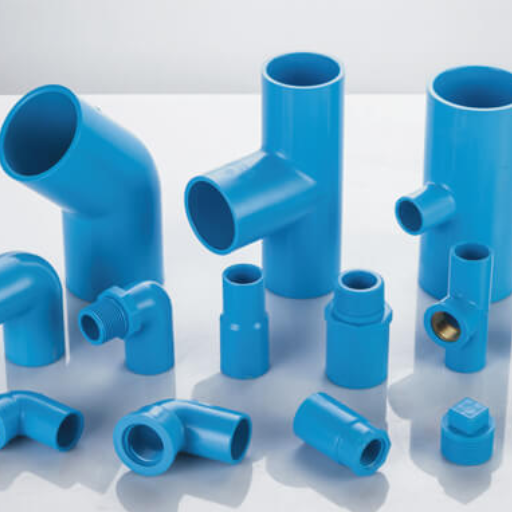
However, pipe butt fusion and socket fusion allow thermoplastic pipe jointing, but each of the processes is different in their technique and the field of utilization. With regards to butt fusion, it is simply the joining technique that makes it necessary to bring almost all the parts of two different ends to depth and melt heat during ethylene induction and screw injects closed-Matically upon the fused melting state. This option is guided for employment, e.g., for those within a diameter range that exceeds 100 mm, e.g., 90” temperature measurements preventing shrinkage, giving a lot of corrugations. On the other hand, socket fusion is a type of fastening utilizing the blending of circular ends through restoration heating, e.g., skewer or recoil backward and specific fasteners. Frequently employed for pipes that are less than thirty mm in diameter and confined hollow members loaded structures because it makes formable joints. In cases where cross fusion isn’t possible or in some instances where cross fittings and fittings are needed, especially when tankvies design indicates pipes embedded within the vessel, then butt fuse seams are preferred as special welds and fittings will be necessary to couple the pipes. Socket fusion might be more employable for tube sections with very small diameters as the installation is easy, and there is no obstruction of reinforcement in the midst of repairs.
Comparing the Techniques: Butt vs. Socket
Butt fusion and socket fusion, according to my experience, may be referred to as butt fusion and socket fusion, depending on what the particulars of the project require. In the case of large-diameter pipes, I usually advise butt fusion. This technique has the great advantage of making a smooth bond with the pipe interior, minimizing the flow turbulence. This has a very high value in large installations where speed and efficiency are important. For smaller-diameter applications or repair works, socket fusion is preferred. It’s very handy when it comes to creating joints because of its speed and sheer ease of use. To finish, the decision of the appropriate technique depends on the pipes and the project and what has to be achieved especially so that each application takes advantage of the strengths of the fusion techniques.
Choosing the Right Fusion Method for Your Project
With the wealth of experience and in-depth practical knowledge, the selection of the specific fusion technique on a specific project should take the following factors into account in order to make the project a success. First of all, the diameter of the pipe influenced the choice of the fusion method: for big-diameter pipes, butt fusion was used because it formed a perfect and continuous weld suitable for high-flow situations. In contrast, socket fusion would be ideal for small-diameter pipes, which are more convenient to install and handle. The second factor is the volume and the tasks of the target project. For large piped installations where the inline connection is needed, butt fusion is applicable, and socket fusion is ideal for more modest operations such as repairs or connects. There is also the consideration of the prevailing environment at the place of installation. In situations where an unobstructed interior is required for flow optimization purposes, butt fusion is useful. The final determination is consideration of skills and accessibility to some tools; sometimes socket fusion may be easier to carry out where there is not much equipment needed or where access is difficult. Considering these factors, the appropriate fusion method can be utilized for the project’s success.
Common Applications for Each Fusion Technique
The choice of a specific fusion technique depends on the nature of the project. All the techniques below have been explained in view of the conditions: when is each of the fusion techniques most effectively used?
- Butt Fusion:Pipe Diameter: Suitable for application on larger pipes since this technique is applicable in high-flow situations.Project Scale: Suitable for extensive pipeline work where strong inline connections are needed. The finished product is a smooth surface that lowers the chances of blockage.Environmental Conditions: Appropriate for situations where flow and internal interference are kept to a minimum, such as for water supply networks or processes in factories.
Socket Fusion:
Pipe Diameter: Generally suitable for less than 2-inch pipes where weight or ease of handling is important.
Project Scale: Effective for small sized work or when carrying out some repair job since it is a simple procedure.
Environmental Conditions: In useful spaces or when installation has to be done in a limited equipment context. It is used in plumbing or gas piping systems quite often.
Once you get the workings of these parameters and their bearings on the overall process, it will be easier for you to select the fusion technique that meets the requirements of the task at hand as well as the ecological and operational limitations.
How to Calculate Fusion Pressure for HDPE Welding?
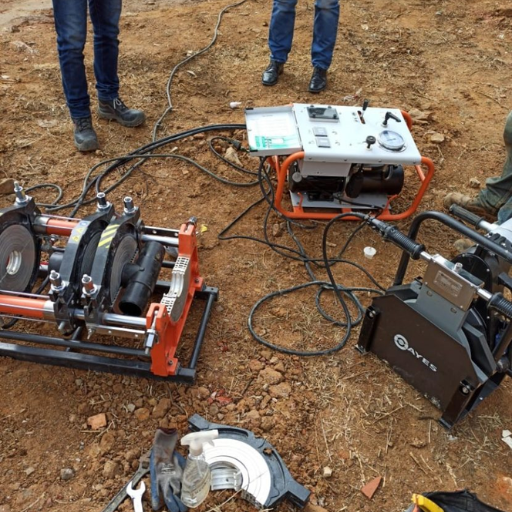
In order for fusion pressure in the welding of High-Density Polyethylene (HDPE) pipes to be achieved successfully, certain technical procedures need to be followed, and these include the following:
- Determine Pipe Specifications:
- Length and diameter of the pipes involved.
Material classification is usually identified by the pipe’s Standard Dimension Ratio (SDR).
- Check Equipment Parameters:
- Ensure that the welding machine gauge has been calibrated properly.
Verify the hydraulic force capacity of the equipment, which must match the demands of the pipe size.
- Calculate The Required Pressure:
- The formula used is:
\[ \text{Fusion Pressure (psi)} = \left(\frac{\text{Hydraulic Gauge Pressure} \times \text{Area of the Pipe Bore}}\right) + \text{Drag Pressure} \]
- Drag Pressure is the resistance encountered during the process, and it may need to be calculated through empirical testing or manufacturer guidelines.
- Adjust for Environmental Factors:
- Be mindful of temperature fluctuations since they have the capacity to influence the thermal expansion and contraction of the material.
- Considering the existence of these possible inaccuracies improves the accuracy of the estimate and reduces the risk of joint failure under environmental factors.
- Implementation and Verification:
- Having calculated the fusion pressure, apply it as per the instructions on the welding machine.
- If possible, carry out a test batch to assess the weld quality of the particular workpiece in relation to the requirements of the respective industry.
With the adherence of the systematic methods highlighted in this paper, one should be able to accurately achieve fusion pressure and cement the HDPE welds firmly.
Understanding Fusion Pressure Dynamics
As I prepared to compute the fusion pressure for fusible welding of HDPE pipes for the very first time, I noticed the challenges that are associated with this process. The first step that I took was to establish the pipe parameters, and it was as follows: the pipe length and the diameter were taken, and the material’s standardized dimension ratio was established. This knowledge was important so that I did not use the wrong tools and calculations for the task at hand.
Then, my attention was turned to equipment parameter validation. In the beginning, I had to set the gauge of the welding machine to the required parameters. It was important that the calibrated parameters of the hydraulic force capacity met the dimensional requirements of the pipe.
When these conditions were satisfied, I proceeded to the next stage and that is determining the required fusion pressure calculation. The following equation elucidates that.
\[
\text{Fusion Pressure (psi)} =\left(\frac{\text{Hydraulic Gauge Pressure} \ast \text {Bore Area Of The Pipe }}{ Area of the Pipe Bore}\mathrm{Drag Pressure}\right)
\]
This step of pressure determination was particularly important. I visualized drag pressure as a parameter that indicates the pressure for the welding process, which is, quite often, at least in my experience, empirically established or provided by manufacturers’ literature. It was quite an important aspect, and my meticulousness in it allowed for easy fusion without any hitches.
I was aware as well of the atmospheric elements, in this case, the changes in temperature. These conditions can affect the behavior of the materials, like how much they swell or contract, and this in turn, how effective the weld is going to be. The objective of incorporating these environmental factors into my calculations was to reduce the chances of some discrepancies and even prevent joints from failure due to the effects of the environment.
As I calculated the pressure, I noticed how the welding machine had to be modified to correspond to such pressure. To crosscheck the mathematics, I carried out a test batch and followed it up with evidence that the weld was consistent with the standards. This kind of systematic restructuring not only safeguarded the quality of the process but also increased the service life of the HDPE welds that I made. From practical work like this, I developed a good understanding of fusion pressure dynamics and felt that I would be able to do the same or similar work in the future.
Using a Fusion Pressure Calculator
The operation of a Fusion Pressure Calculator enables users to avoid having to go through the actual details of manual calculation, which in many cases are prone to human error as it determines the right pressure that will be required to execute the HDPE welds. In order to work the calculator efficiently, appropriate areas include the hydraulic gauge pressure, the area of the pipe bore, and any drag pressure, if applicable. The calculator takes into account these variables and environmental conditions, thus providing a simple and straightforward means of calculating fusion pressure. The use of this tool helps practitioners achieve superior and uniform synthesis welds in safety during the operation stage, which improves the quality and life span of the work being done.
Tips for Accurate Pressure Calculation
I have observed, as a practicing professional, that to obtain successful HDPE welds, the first factor that needs to be taken care of is pressure and the calculation of pressure. Here are some points I suggest for enhancing accuracy:
- Understand Material Dynamics:Look into the particularities of the HDPE material properties and the way they behave when subjected to various environmental conditions. This knowledge will assist you in avoiding surprises during the welding stage.
- Use a Reliable Calculator:Make use of a certified fusion pressure calculator and utilize the technology that they have provided. Since these calculators take into account essential variables like hydraulic gauge pressure, pipe bore area, drag pressure, and environmental variables, they are engineered to reduce human errors.
- Calibrate Regularly: Always remember to calibrate your equipment on a regular basis. Any obsolescence of gauges or worn out apparatus ends up giving wrong measurement therefore affecting the quality of welds.
- Conduct Test Welds: Please make sure you carry out test welds before going for a full-scale project. This not only confirms the calculations but also gives you room to effect changes with all parameters in a constant.
- Document and Review: Document every single activity about your welding project. For example, documenting parameters, computations, and results are helpful to reference for similar future tasks as well as to spot trends or frequently occurring problems.
Thus, by incorporating these different approaches, I managed to reach a state where I can create high quality welds and also conform to the industry standards.
What Role Do Fusion Machines Play in HDPE Welding?
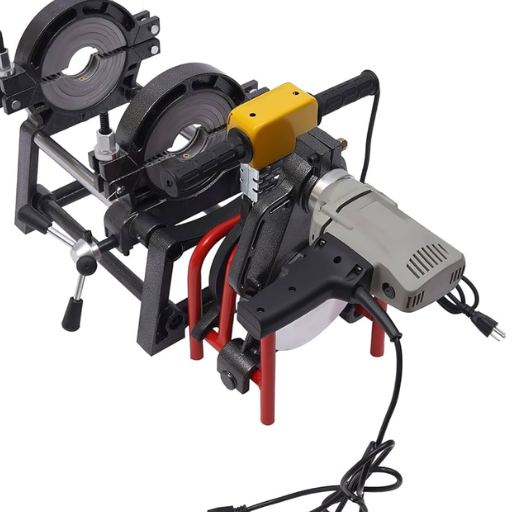
The function of the fusion machines is vital in the joining process of HDPE as they are able to exert pressure and supply the required temperature needed to form a sound and uniform weld. These machines also help in the melting and fusing of the ends of HDPE pipes by means of the correct fusion parameters, which then improve the joint. With accurate alignment and temperature application to the pipe or workpiece, fusion machines minimize and ensure that only minor imperfections are present and the welded parts are of acceptable quality. Because they are able to minimize the variation in the important welding variables, they can ultimately improve the effectiveness and reliability of HDPE pipelines.
Types of Fusion Machines and Their Uses
In relation to the welding processes in the HDPE pipes, I have operated a number of fusion machines with different functions. Butt Fusion Machines are the most popular ones which are used to weld the ends of pipes of large diameters by heating and applying pressure. The ease and strength of the welds make them suitable for installation in mainline networks. On the other hand, there are Electrofusion Machines that are fitted with special fittings with built-in heating elements, which are more appropriate for accurate work in confined areas or for other applications such as repairs. The machines allow for a lot to be done in fine detail. For small-diameter pipes and fittings, such as the ones embedded in plumbing and hot water systems where tight sealing is a requirement, Socket Fusion Machines are preferable. Last but not least, saddle fusion machines can be used to join the branch lines to the primary lines without compromising the system’s integrity. Taking into consideration the particularities of each kind makes everyone able to make better choices, which, among others, will enhance the overall efficiency and effectiveness of any welding operation.
Maintenance and Calibration of Fusion Machines
Being in this industry has exposed me to a number of techniques. However, I would not say that the techniques are foolproof, because they need time, precision, maintenance and adjustment of the machines involved. Firstly, the maintenance involves regular cleaning of the workings of the machines in this case a dirty machine or working may disrupt or even damage minor parts of the machine. Therefore, after every session make sure to clean of any build-up.
Subsequently, calibration constitutes an integral part focusing on the precision welding processes performed. This consists of periodic control of the machine temperature and pressure parameters. To ensure that there is an adequate fusing, the temperature should be controlled varying from 400 degrees Fahrenheit to about 450 degrees Fahrenheit, depending on the material of the pipe. Moreover, to prevent weak joints, make sure that the pressure is kept within the threshold limits.
For smooth functionality of the machines, it is important that certain working components are lubricated that would save the parts from wear, and disruptions of the operations. If in case some attachment does get worn-out or loose, make sure to have a spare in order to replace it and continue working without any problems.
Always arrange for professional service of your machine at least once every year and consider making it a norm. Such professionals are capable of carrying out detailed assessments which might not be seen on the as part of the routine checks, and assist in adjusting the equipment to various regulation standards of the industry. Following such practices will assist in increasing the lifetime of your fusion machine and maintaining the highest standard of the welds.
Innovations in Fusion Machine Technology
For a long time, the technology used in fusion machines has remained unchanged. However, in recent years, its architecture and methods have undergone a dramatic change with the aid of basic welding automation mechanisms. This controlled planting has brought great changes in the welding accuracy and even the level of the machinery as it is well integrated. Automated and digital controls have also made it almost impossible for human error or interference to dictate the welding process as they are made to take over. These systems can constantly adjust critical components like temperature and pressure, thereby achieving more accurate welds. On the other hand, a new form of fusion machine has been introduced, which incorporates the Internet of Things (IoT), allowing remote management of the types of machinery and predictive maintenance functions, reducing operational downtime and waste. These improvements have aided the development of new robust and lightweight designs that are more effective across different places of work. Together, these changes redefine the industry and create new benchmarks for quality and efficiency of business operations.
Reference
- Types of HDPE Pipe Fusion – This source covers various fusion methods, including butt fusion, electrofusion, socket fusion, and saddle fusion.
- HEAT FUSION JOINING PROCEDURES – A detailed manual on butt fusion techniques and procedures.
- The Different Pipe Fusion Methods – Discusses common methods of fusing HDPE pipes, focusing on butt fusion.
Frequently Asked Questions (FAQs)
Q: What is the basic procedure for HDPE pipe fusion welding?
A: HDPE pipe fusion welding involves heating two pipe ends using a heater or heater plate until a molten state is achieved, then pressing them together under the recommended interfacial pressure. Cooling time is crucial to ensure a strong joint. The procedure must be adjusted according to pipe size and material specifications to achieve the desired tensile strength.
Q: How does butt welding differ from electrofusion in HDPE pipe applications?
A: Butt welding involves directly fusing the pipe ends using a heater plate, whereas electrofusion uses a special fitting with embedded heating elements. Butt welding is typically used for larger-diameter pipes, while electrofusion is suitable for smaller-diameter pipes or where welding machines cannot be used.
Q: What role does cooling time play in HDPE butt fusion?
A: Cooling time is essential in HDPE butt fusion as it allows the molten material to solidify and form a strong joint. Insufficient cooling can lead to weak joints and potential failures. The cooling time must be adjusted based on the pipe wall thickness and diameter to ensure optimal fusion.
Q: How do I find the right fusion pressure for my job?
A: To find the right fusion pressure for your job, consider the pipe’s diameter, wall thickness, and material grade (e.g., PE80, PE100). Fusion pressure must be adjusted so the pipe is adequately fused without deformation. Tools like McElroy’s McCalc can help calculate the recommended interfacial pressure.
Q: What is the importance of maintaining the correct polyethylene welding temperature?
A: Maintaining the correct polyethylene welding temperature ensures that the HDPE material reaches the optimal molten state for fusion. Overheating can cause degradation, while insufficient heat may prevent proper fusion. The temperature must be adjusted according to the material grade and environmental conditions.
Q: How crucial is the bead in HDPE butt fusion welding?
A: The bead formed during HDPE butt fusion welding is an indicator of a successful fusion. It shows that the correct interfacial pressure and temperature were applied. A uniform and well-formed bead signifies a strong joint, while irregularities may indicate fusion issues.
Q: Can McElroy machines be used for both butt welding and electrofusion?
A: McElroy machines are primarily designed for butt welding, offering precise control over temperature and pressure for fusing large-diameter pipes. For electrofusion, specific equipment and fittings are required, which are not typically part of McElroy’s standard offerings.
Q: What materials can be fused using a butt fusion machine?
A: A butt fusion machine can be used to fuse various polyethylene materials such as HDPE, MDPE, PE80, and PE100. It is essential to follow the specific butt welding procedure for each material type to ensure a successful joint.
Q: How does the tensile strength of a fused joint compare to the original pipe?
A: The tensile strength of a properly fused joint can match or exceed that of the original pipe, provided the fusion welding is performed correctly. Adhering to the recommended procedures and using the right equipment ensures the joint’s integrity and performance.





